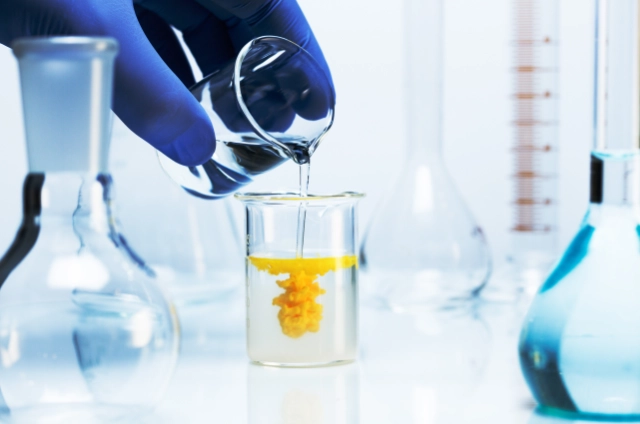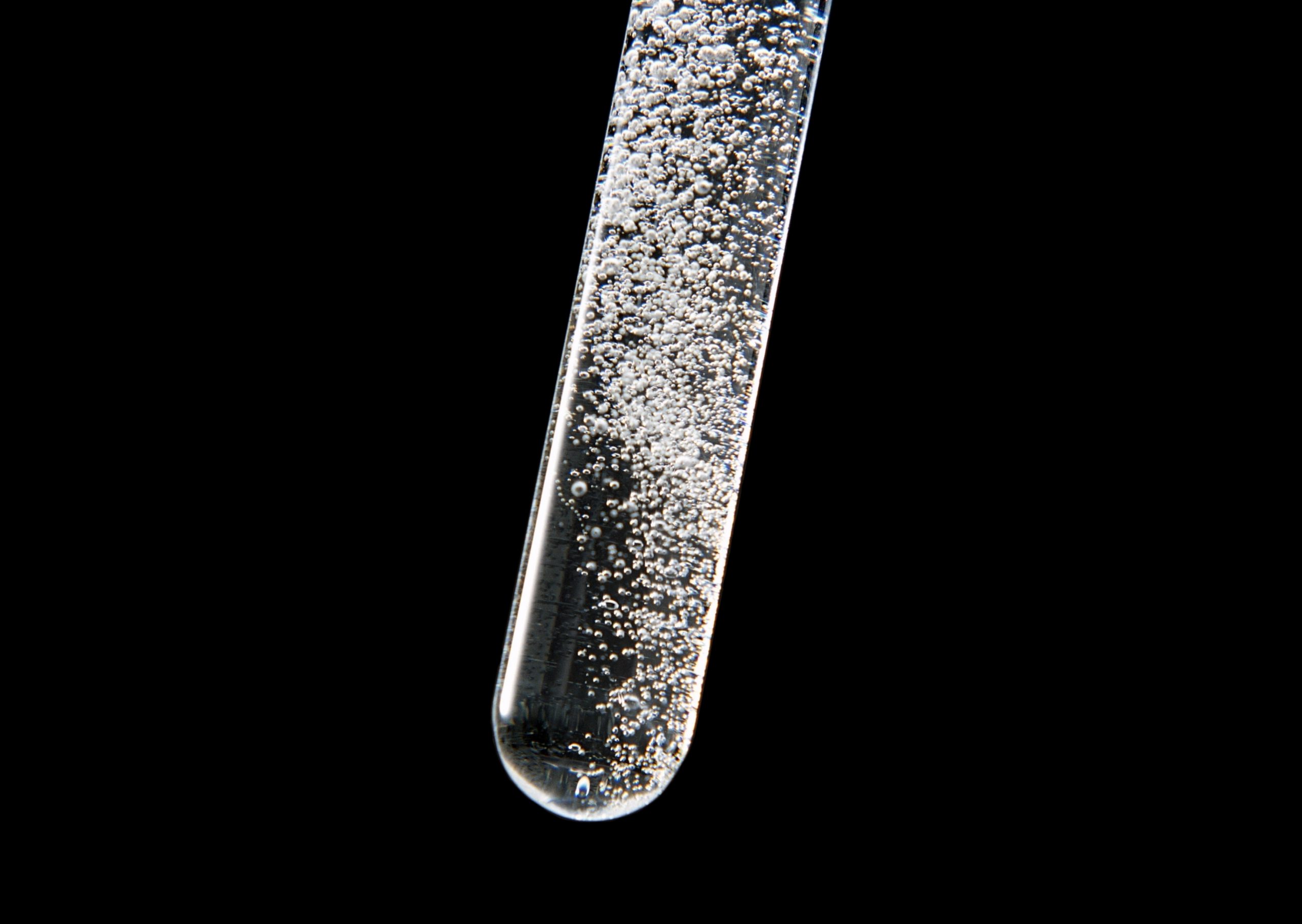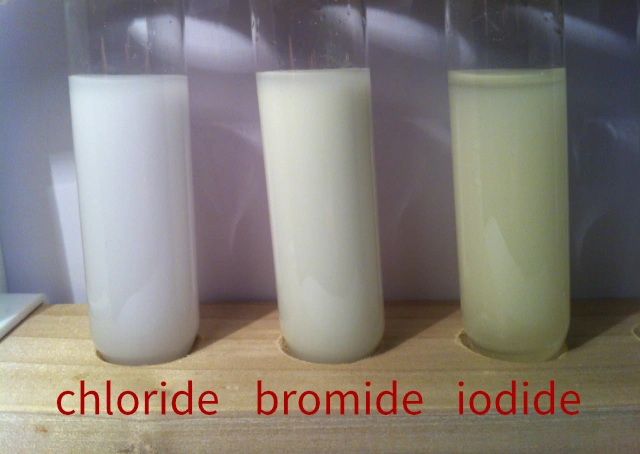Anion tests

Learning outcomes
After studying this page, you should be able to:
- describe how to test for these ions:
- carbonate, CO32–
- sulfate, SO42–
- chloride, I–
- bromide, Br–
- iodide, I–
Testing for carbonate ions
Acids release hydrogen ions in aqueous solution. These ions react with carbonate ions to produce water and carbon dioxide:
2H+(aq) + CO32–(aq) → H2O(l) + CO2(g)
Bubbles are given off in the reaction. The presence of carbon dioxide is confirmed using limewater.
This reaction happens whatever acid is used. However, these two acids are commonly used:
- dilute hydrochloric acid
- dilute nitric acid.
Method
- Place the sample in a clean test tube. Use 1–2 cm3 of an aqueous sample or a spatula end of a solid sample.
- Add a few drops of dilute acid and record your observations. If you see bubbling, carry on to step 3.
- Hold a dry dropping pipette inside the test tube, with the end above the sample (not in it). Gently squeeze the bulb several times to draw gas into the pipette.
- Transfer the dropping pipette to a test tube containing limewater. Gently squeeze the bulb several times to repeatedly draw limewater into the pipette so that it mixes with the gas inside. Record your observations.

Results
Bubbles are given off. The gas they contain turns limewater milky (cloudy white).
Take care not to just write ‘cloudy’, because precipitates are not always white.

Testing for sulfate ions
Barium ions react with sulfate ions to produce barium sulfate:
Ba2+(aq) + SO42–(aq) → BaSO4(s)
Most sulfates are soluble in water. However, barium sulfate is insoluble. It forms a white precipitate in the reaction.
Calcium sulfate and lead sulfate are also insoluble in water.
Method
If the sample is in the solid state, dissolve a small portion in deionised or distilled water.
- Add about 2 cm3 of the aqueous sample to a clean test tube.
- Add a few drops of dilute hydrochloric acid to acidify the sample. Gently shake to mix.
- Add a few drops of aqueous barium chloride. Record your observations.
The aim of step 2 is to react with any carbonate ions that may be present in the sample. These would form a white precipitate, giving a false positive result.
You can use aqueous barium nitrate and dilute nitric acid instead, with the same results.
Results
A white precipitate forms if sulfate ions are present in the sample.
![]() barium chloride solution
barium chloride solution
Harmful if swallowed.
Testing for halide ions
Silver ions react with halide ions to produce silver halide salts. For example:
silver nitrate + sodium chloride → sodium nitrate + silver chloride
The ionic equation for this reaction is:
Ag+(aq) + Cl–(aq) → AgCl(s)
Silver chloride, silver bromide and silver iodide are insoluble in water. They form different coloured precipitates in these reactions.Silver salts are usually insoluble. However, nitrates are soluble in water, which is why silver nitrate can be used in these tests.
Method
If the sample is in the solid state, dissolve a small portion in deionised or distilled water.
- Add about 2 cm3 of the aqueous sample to a clean test tube.
- Add a few drops of dilute nitric acid to acidify the sample. Gently shake to mix.
- Add a few drops of aqueous silver nitrate. Record your observations.
The aim of step 2 is to react with any carbonate ions that may be present in the sample, as these would form a white precipitate. Hydrochloric acid cannot be used because its chloride ions would form a white precipitate too.
Results
Video
The video shows:
- calcium carbonate reacting with dilute acid
- testing for sulfate ions
- testing for iodide ions.
- Flame testing salts of lithium, sodium, potassium, calcium, copper(II) and strontium.
- Flame testing lithium chloride
- Flame testing sodium chloride
- Flame testing potassium chloride
- Flame testing calcium chloride
- Flame testing copper chloride
- Flame testing strontium chloride
- Reaction of calcium carbonate with acid, testing for sulfate ions, and testing for iodide ions.

